
william bryan : natural history of hawaii, 1915
| home | catalogue | history | references | appendix |
 |
surfresearch.com.au
william bryan : natural history of hawaii, 1915 |
Internet Archive
http://archive.org/details/naturalhistoryof00brya
Number 2, Showing
the shape and size of the board, is remarkably similar, but not
identical to a postcard published by the Hilo Drug Company, circa 1907.
- DeLaVega: Surfing
in Hawai'i (2011) page 33.
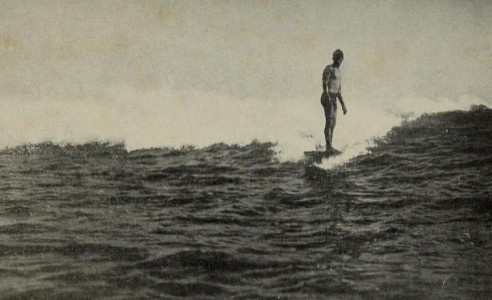
1. Hawaiian youth
standing on the surf board [papa hee nalu].
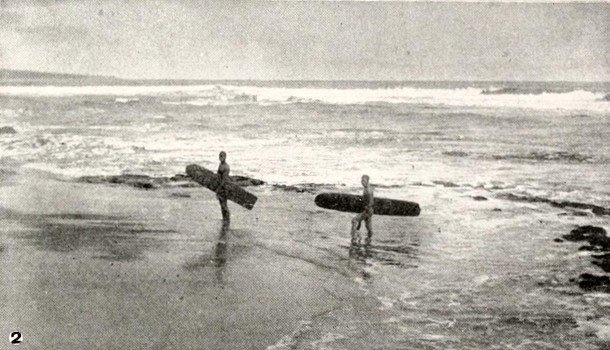
2. Showing the
shape and size of the board.
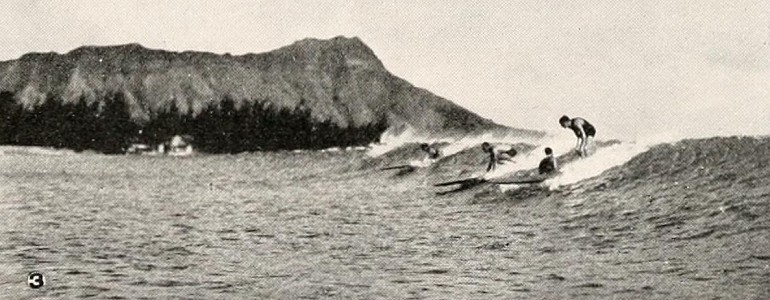
3. Racing in
the surf at Waikiki; Diamond Head in the background.
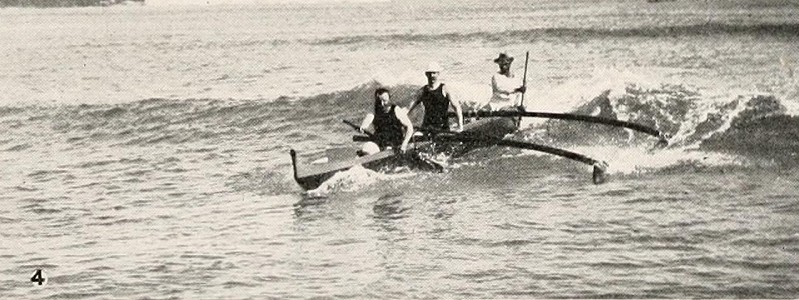
4. An outrigger
canoe [waa] showing the outrigger [aina] of wiliwili wood
and the connecting
bars [iako] of hau and the gunwale [inoo] of ulu.
The paddles [hoe]
are of koa and kauila wood.
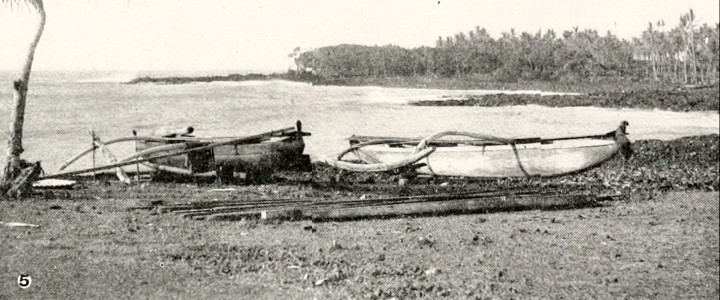
5. Two single
canoes on the island.
The hull of the
canoe is always made of a single koa log.
Page 85
A sport which
was justly popular with all clases was what might be called "summer tobogganing."
It consisted
in sliding down hill over carefully prepared slides, a few yards in width,
on a long, douhle-runner sled.
There are a number
of these slides that are still pointed out as favorite coasting places
of ancient times.
Any smooth mountain
slope of sufficient steepness would serve the purpose.
The only complete
sled in existence is in the Bishop Museum.
The two runners
of this one are each just over eleven feet in length and are three inches
apart.
They are firmly
fastened to the narrow frame.
The native tobogganer
would lie fiat upon this curious sled, the papa holua, and give
it a push with his foot, to start it off.
During the decent
it would sufficiently gain an immense velocity, and the sport, while
exhilarating, must have been
accompanied with
great danger to life and limb.
Several of the
old slides are more than a half mile in length, one on the town side of
Diamond Head ran far out on the plain, and another still longer one is
to be seen from King street, at the opposite end of the city of Honolulu.
...
A favorite game
in which women engaged with much skill, consisted in hiding a pebble, the
noa,
which was held in the hand, under one of five piles of tapa.
It was for the
opposing side to guess in which pile the stone was left, striking the pile
selected with a rod tipped with feathers. There were also many children's
games, such as flying kites, cat's cradle and jumping the rope.
But the sports
par excellence in which the chiefs and common people, both old and young
indulged, were those which had to do with the wonderful surf for which
Page 86
the islands are
far-famed.
Being excellent
swimmers from their youth the natives were as a race devoid of fear.
They would leap
from high precipices into the foaming surf below, fifty, sixty and seventy
feet; and it is still common to see the swimmers and divers in the harbor
leap one after another from the bridge or from the life boats of the largest
ocean steamers.
But riding the
surf with the surfboard was and is still the favorite amusement, and an
art in which the Hawaiians always exhibited wonderful skill and dexterity.
For this amusement
a plank, preferably of koa wood, known as a surfboard, was used.
It was a coffin-shaped
plank averaging about ten feet in length by a foot and a half in width,
though they were occasionally eighteen feet or more in length, and from
that ranged down to very small ones for children.
Some were made
of the very light wiliwili wood.
They were always
made with great care and were kept smoothly polished.
The swimmer,
with his board, would gradually work his way out through the shallow water,
over the fringing coral reef to where the high rollers rise over the outer
reef and follow each other in rapid succession over the table-like reef
toward the shore.
The more terrific
the surf, the greater the pleasure to those skilled in the sport, a form
of recreation that is enjoyed in these modern and more strenuous times
by natives and foreigners alike.
Selecting the
proper kind of wave, the surf-rider would get his board under way by paddling
furiously with his hands and feet. At the proper moment, mounting a high
wave he throws himself on the board just as it is seized by the force of
the on-rushing water. Skillful manipulation is required to manage and keep
the board just abreast of the crest of the towering wave, which, if everything
goes as planned,
carries the swimmer and his board, at race-horse speed, clear into the
shallow water at the beach.
In this manner
they disported themselves for hours at a time, returning again and again,
often standing erect and gracefully poised on their boards as they were
wafted in on the bosom of the foam-capped wave.
Surf-riding extended
to canoe racing in which the principle just indicated was even more elaborately
applied.
Strong crews of picked men would man their best type of racing canoes and pull out to where the surf began to rush over the reef. There amid the rush and dash of the sea, each crew would await the signal, when the race would begin, each man paddling furiously, until the canoes were caught by the waves, and amid wild shouts of exhilaration, scarcely audible above the ocean's roar, the successful crew would reach the shore, claiming the race, to the unbounded joy of all.
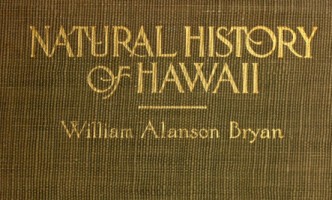
Bryan, William Alanson:
Internet Archive
|
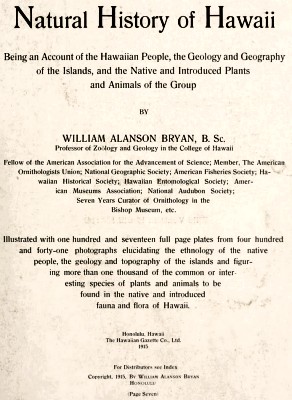 |

| home | catalogue | history | references | appendix |